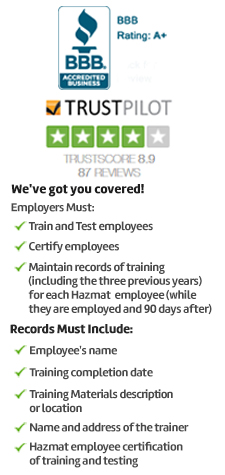
Arc Flash Safety Online Training

Electrical equipments and systems need special focus in enterprises as many of the accidents can be attributed to electrical hazards with arc flash events taking the central stage causing huge destruction and losses.
This online course is designed to address the safety measures attributed to accidents due to arc flash. Students also learn basic electrical safety concepts, reasons for ark flash accidents, safety standards followed in electrical industry and hazard control exercises for workers and employers to limit the risk of arc flash incidents.
Governing regulations
Since the arc flash incidents involve both electrical safety and fire safety in workplace environments, the Occupational Safety and Health Administration (OSHA) in 1970 had incorporated fire safety standards as formulated by National Fire Protection Association’s (NFPA) codes. Even though all these codes are not made by OSHA, companies get compliance certificate if they follow NFPA guidelines to reduce or control arc flash incidents. The following codes detail the applicable regulations and the respective areas.
OSHA 29 Code of Federal Regulations Part 1910 Subpart S-vital electrical safety requirements, including design work practices, standards and maintenance requirements.
NFPA 70E Standard for Electrical Safety Requirements: This is applicable for Employee and Workplace safety requirements involving electrical equipment and systems.
NFPA 70 National Electrical Code: It provides a comprehensive set of electricity-related regulations which include quality power system, applicable safety standards, wiring parameters and quality electrical equipment.
IEEE Standard 1584: This offers guidelines to perform arc flash hazard calculations.
Course Overview
Electrical work requires specialized safety considerations and safe practices to prevent accidents such as arc flash at workplaces, which is one of the most dangerous safety hazards involving electricity.
The urgent need to contain the arc flash incident can be well understood from the fact that in the U.S. ten arc flash accidents are reported every day. So, it is important that enterprises pay best attention to risk management and take effort to become safety compliant to prevent arc flash accidents, injuries and losses. Our online course offers an overview of the nature and types of hazards involving arc flash, how to minimize the incidents and effective risk and hazard control measures. Students get to know the required regulations to be applied in workplaces for both electrical and fire safety.
Who Must Take this Course?
Arc flash incidents can be contained through proper training and awareness program for employees who are at high risk. Apart from the workers who are directly involved in the risk-filled places, others who are associated in the work environment too should have adequate awareness on the existence of hazards and safety measures. Workers need to be trained and informed regularly and must be ascertained to understand their level of knowledge and skills to perform safe operations of electrical equipments and hazard management skills.
Course Format
Our Arc Flash Safety Training course includes updated content for students and workers, excellent graphical and audio presentations and good number of practice questions to clear the final exam.
Students completing the course are provided with completion certificate and also a wallet card.
Continuing education credits?
Each participant will get 0.2 CEUs (or 2 CMEs) for completing this online safety course.
Topics Covered
- About This Course
- Course Objectives
- Introduction to Arc Flash Safety Training
- Basic Vocabulary and Concepts
- Properties of Electricity
- Electricity Measurements
- What is an Arc Flash?
- Typical Causes of Arc Flash
- Arc Flash Severity Factors
- Electrical Injury Statistics
- Arc Flash Safety Regulations
- Hazards and Safety Standards
- Arc Flash Hazards
- Electrical Current Properties
- Electric Shock Injuries
- Metal Vaporization Properties
- Vaporized Metal and Shrapnel Injuries
- Concussion Properties
- Concussion Injuries
- Burn Properties
- Burn Injuries
- Flash Properties
- Flash Injuries
- Vaporized Metal and Shrapnel Injuries
- Responding to Downed or Contacted Energized Lines
- Arc Flash Hazard Classifications
- Arc Flash Safety Responsibilities
- Employers
- Managers and Supervisors
- Employees
- Hazard Control Measures
- Engineering Controls
- Incident Energy Reduction Methods
- Equipment Alternatives
- Administrative and Procedural Controls
- Arc Flash Risk Assessment
- Hazard Identification
- Electrically Safe Work Condition
- Energized Electrical Work Permit
- Lockout/Tagout
- Approach Limits
- Barricades and Guarding
- Warning Labels
- Best Practices
- Written Safety Program
- Education and Training
- Personal Protective Equipment
- Head and Face Protection
- Eye Protection
- Hand and Arm Protection
- Foot Protection
- Body Protection
- PPE Requirements at Hazard Levels
- PPE Inspection and Maintenance
- Practical Arc Flash Safety Precautions
- What to Do in the Event of an Arc Flash
- Summary
- Additional Resources
- Exam


 NEBOSH CERTIFICATE
NEBOSH CERTIFICATE NEBOSH DIPLOMA
NEBOSH DIPLOMA IOSH
IOSH SAFETY DIPLOMA
SAFETY DIPLOMA CPD UK
CPD UK ROSPA UK
ROSPA UK FOOD SAFETY
FOOD SAFETY 




